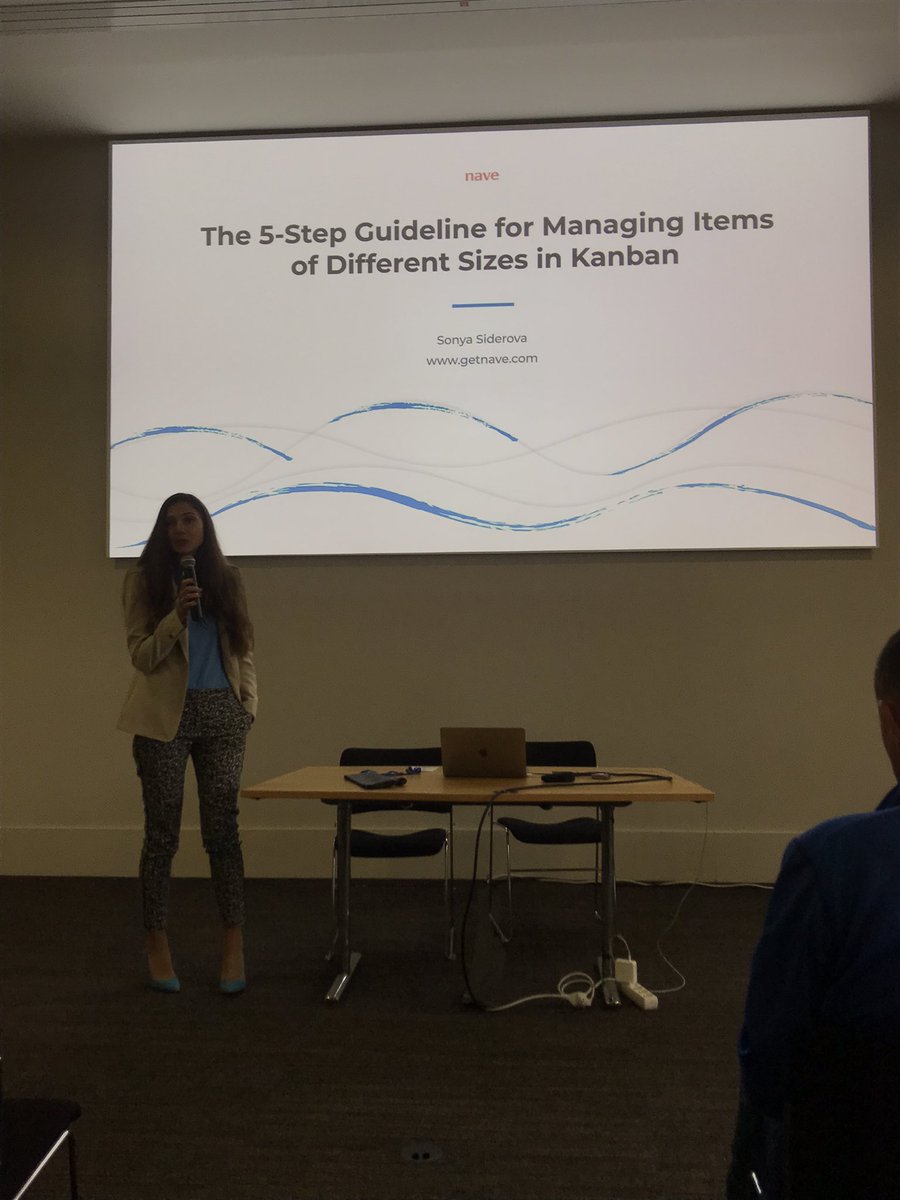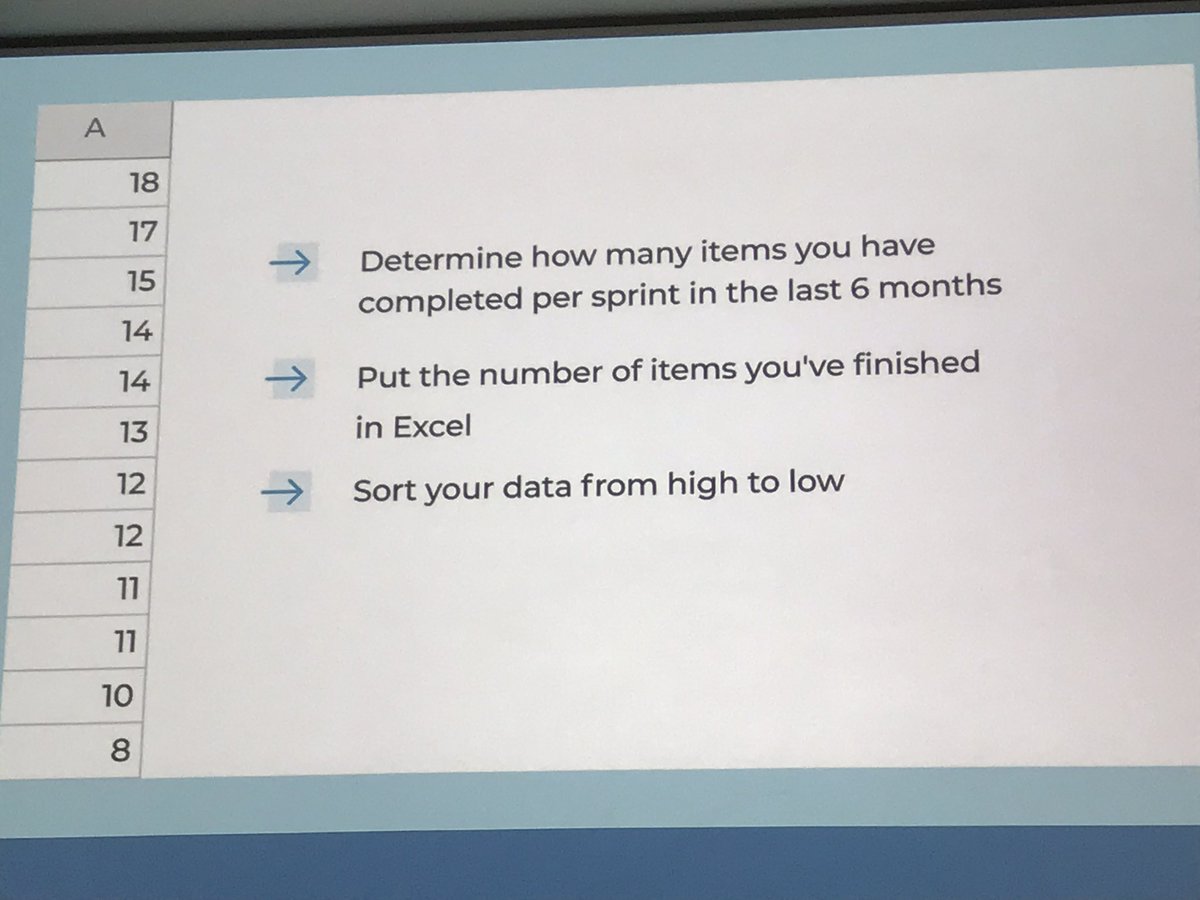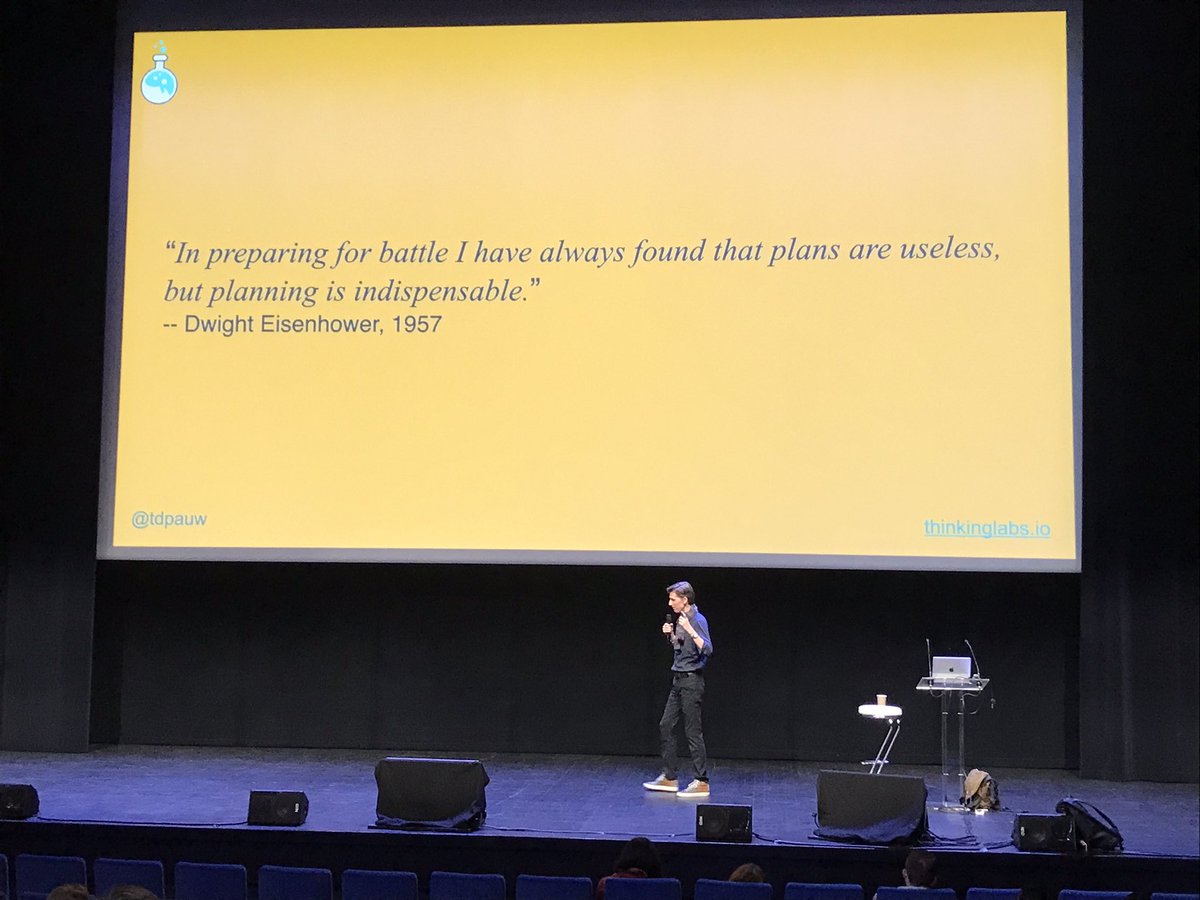
“#Kanban doesn’t work for us because we don’t have items of the same size”
“If we don’t slice our items into even pieces, how do we keep our commitments?”
The 5-step guideline for managing items of different sizes in Kanban, by @SonyaSiderova
“If we don’t slice our items into even pieces, how do we keep our commitments?”
The 5-step guideline for managing items of different sizes in Kanban, by @SonyaSiderova

There’s no model that provides 100% certainty that something will happen in the future.
#Kanban is a probabilistic forecasting model –you spend time *doing* the work instead of estimating task duration. #flowcon
#Kanban is a probabilistic forecasting model –you spend time *doing* the work instead of estimating task duration. #flowcon
The size of your work doesn’t affect the accuracy of your forecast. (We are managing the risk of failure here.)
#flowcon
#flowcon

1️⃣ Assess the complexity of the work
Planning is made of 2 phases:
–Analysis: gain an understanding of the pb you’re trying to solve
–Forecasting: evaluate whether there is a risk of breaking commitment
This is the only question you should be asking yourself:
Planning is made of 2 phases:
–Analysis: gain an understanding of the pb you’re trying to solve
–Forecasting: evaluate whether there is a risk of breaking commitment
This is the only question you should be asking yourself:

3️⃣ Split the work into pieces of customer value. The main goal is to get feedback asap. Stick to what’s meaningful for your customer. Slicing is a continuous process.
4️⃣ Set explicit process policies
How de we handle urgent items?
What happens when an item is blocked?
It reduces distractions and multitasking.

How de we handle urgent items?
What happens when an item is blocked?
It reduces distractions and multitasking.


5️⃣ Manage the flow of work effectively.
The delivery time depends on way more factors than your efforts ⤵️
@NaveHQ has analized 10000+ workflows, turns out there was 70% waiting time. Strive to reduce the waiting time that your work spends in progress.
The delivery time depends on way more factors than your efforts ⤵️
@NaveHQ has analized 10000+ workflows, turns out there was 70% waiting time. Strive to reduce the waiting time that your work spends in progress.

• • •
Missing some Tweet in this thread? You can try to
force a refresh
































